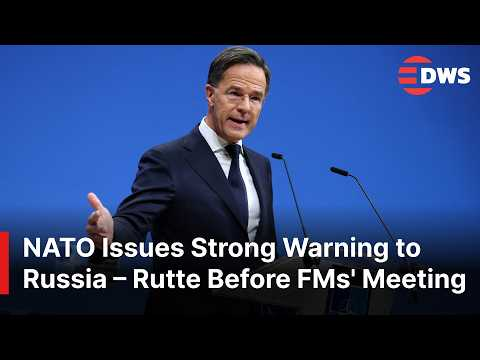Conversations – 9:31 PM 12/4/2025
Rutte responds to Putin: NATO will do “what it takes“ …
Rutte’s statement was made during a press conference at a NATO foreign ministers’ gathering in Brussels on December 3, 2025. NATO Secretary General Mark Rutte declared that the alliance is “ready and willing to do what it takes to protect our 1 billion people and secure our territory” in response to recent hawkish comments from Vladimir Putin
Key Points of Rutte’s Statement
Defensive Alliance: Rutte emphasized that NATO is a defensive alliance and will remain so.
Deterrence: The statement was a direct message to Putin that the alliance is unified and prepared to defend its member states against any potential aggression or miscalculation.
Response to Putin’s Rhetoric: His comments followed a statement by Putin suggesting Russia did not want war with Europe but was “ready for war”. Rutte also downplayed some of Putin’s remarks, noting he would not react to everything the Russian president said.
Ongoing Support for Ukraine: Rutte stressed the importance of maintaining pressure on Russia and continuing a stable flow of weapons and financial support to Ukraine, making it clear that NATO “is not going anywhere” in its commitment to Ukraine’s defense.
Addressing Risks: He also highlighted the “real and lasting dangers” posed by Russia’s “reckless behavior,” including airspace violations and hybrid attacks, and emphasized the need for unwavering vigilance.
The full transcript of the press conference is available on the official NATO website.
Google Search google.com/search?q=Rutte
Rutte’s statement was made during a press conference at a NATO foreign ministers’ gathering in Brussels on December 3, 2025. NATO Secretary General Mark Rutte declared that the alliance is “ready and willing to do what it takes to protect our 1 billion people and secure our territory” in response to recent hawkish comments from Vladimir Putin
Key Points of Rutte’s Statement
Defensive Alliance: Rutte emphasized that NATO is a defensive alliance and will remain so.
Deterrence: The statement was a direct message to Putin that the alliance is unified and prepared to defend its member states against any potential aggression or miscalculation.
Response to Putin’s Rhetoric: His comments followed a statement by Putin suggesting Russia did not want war with Europe but was “ready for war”. Rutte also downplayed some of Putin’s remarks, noting he would not react to everything the Russian president said.
Ongoing Support for Ukraine: Rutte stressed the importance of maintaining pressure on Russia and continuing a stable flow of weapons and financial support to Ukraine, making it clear that NATO “is not going anywhere” in its commitment to Ukraine’s defense.
Addressing Risks: He also highlighted the “real and lasting dangers” posed by Russia’s “reckless behavior,” including airspace violations and hybrid attacks, and emphasized the need for unwavering vigilance.
The full transcript of the press conference is available on the official NATO website.
Google Search google.com/search?q=Rutte

